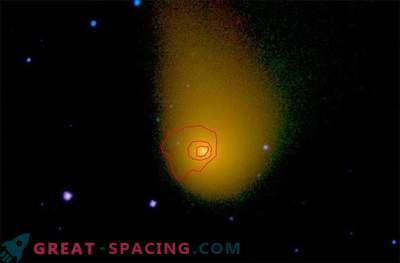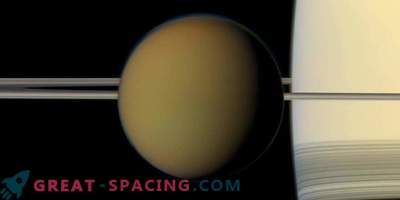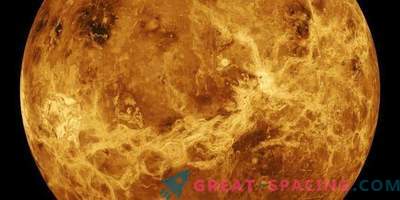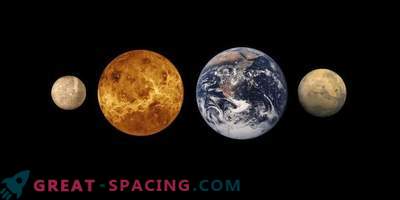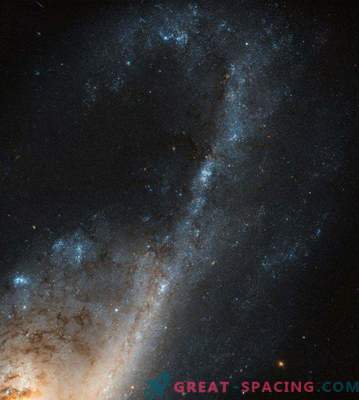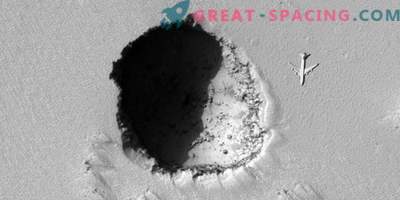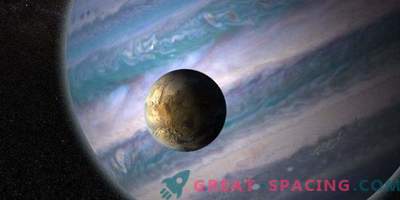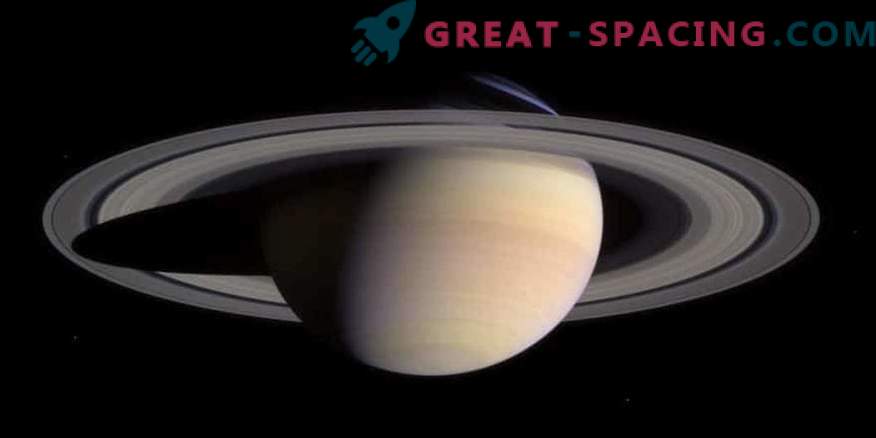
Bottom left is an infrared review of Saturn by VIMS Cassini. Blue is infrared light, where water ice is reflected relatively brightly. Red is a longer thermal radiation showing heat from the depths of the planet. Green — infrared waves in which light radiates light. Above is Phoebe's moon in visible light. It is dark as charcoal (scale with Saturn is not respected)
Creating a new method for measuring the isotopic ratios of water and carbon dioxide remotely, scientists suddenly found out that the water in the rings and satellites of Saturn resembles water on Earth. The only exception was Phoebe's moon, where water seems to be the most unusual among all the objects studied in the solar system.
The new results suggest that we will have to change the models of the formation of the solar system, since the information obtained contradicts the existing models. Isotopes are different forms of elements with different numbers of neutrons. Adding a neutron adds mass to an element and can change the formation of a planet, comet or satellite. Water consists of two hydrogen atoms (H) and one oxygen (H2O). Adding a neutron to a single hydrogen atom (deuterium - D) increases the mass of the water molecule (HDO) by about 5%. This leads to isotopic differences in the formation of a celestial body and changes the process of evaporation of water after creation. The deuterium to hydrogen (D / H) ratio is an imprint of formation conditions, including temperature and evolution. Evaporating water enriches deuterium on the remaining surface.
Solar system models show that D / H must be much higher in a cooler external system than in a hot internal where the Earth lives. Deuterium is common in cold molecular clouds. Some predictions show that the D / H index should be 10 times higher for the Saturn system than the Earth. However, new data report that this does not apply to the rings of Saturn and the moons except Phoebe.
Interestingly, the D / H ratio for Phoebe is the highest measured in the solar system, which hints at the formation in the cold outer system far beyond Saturn. Scientists also measured the ratio of carbon-13 to carbon-12 on Iapet and Phoebe satellites. The first value is similar to the earth, but Phoebe is almost 5 times higher in the carbon isotope. The presence of carbon dioxide confirms the formation of Phoebe in the frosty part of the system. The exact distance can not be specified, because there are no correlation measurements for Pluto or Kuiper belt objects. For the study, data from the NASA Cassini spacecraft and its visual and infrared spectrometer VIMS were used. The new method of measuring isotopic ratios on solids (water ice or carbon dioxide) at large distances will allow for similar measurements for all objects in the solar system, which will improve the formation model.
It is also important that the water of Saturn is able to resemble the earth, and therefore the source is similar to the internal and external systems. Perhaps, the following measurements will turn out to be carried out with the help of the NASA Clipper mission.






